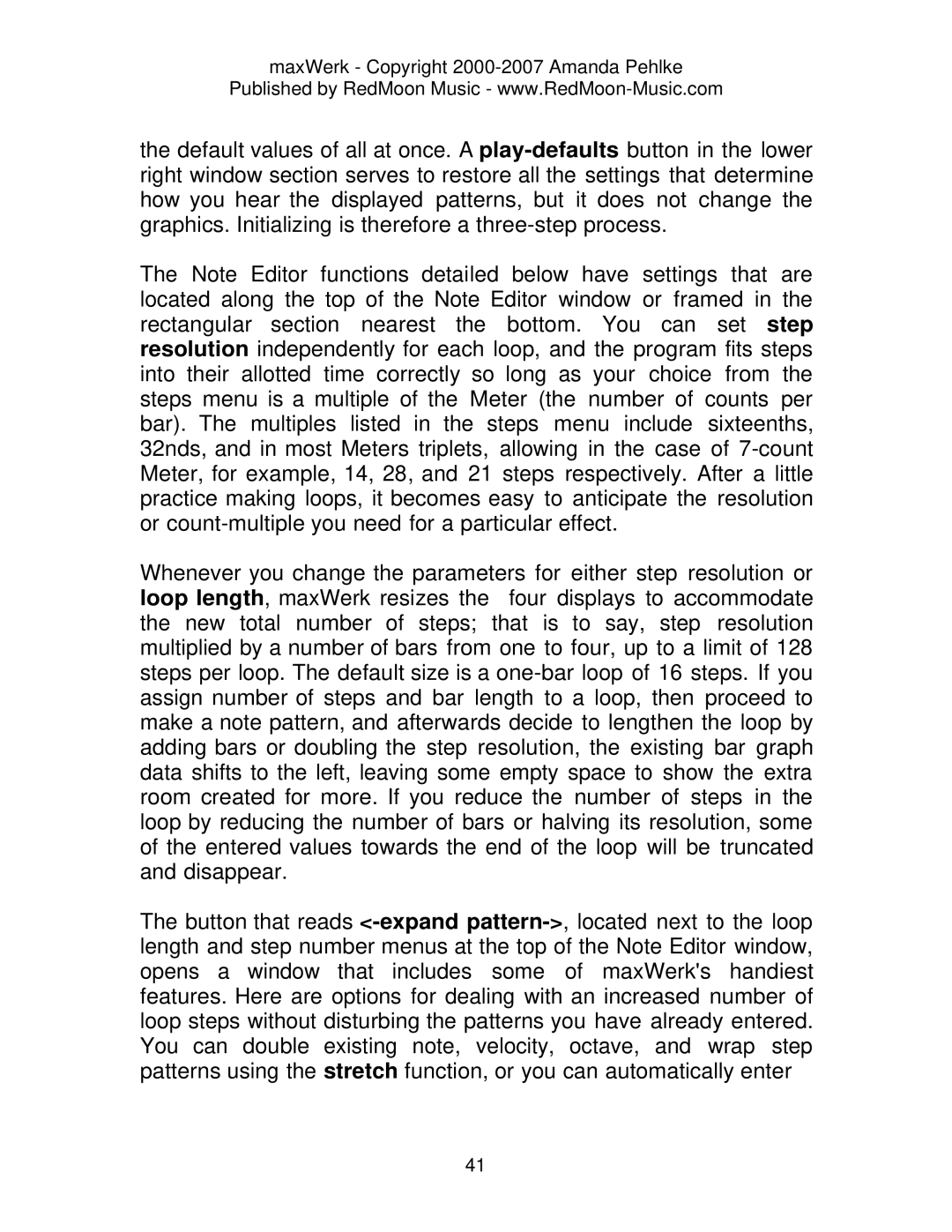maxWerk - Copyright 2000-2007 Amanda Pehlke
Published by RedMoon Music - www.RedMoon-Music.com
the default values of all at once. A play-defaultsbutton in the lower right window section serves to restore all the settings that determine how you hear the displayed patterns, but it does not change the graphics. Initializing is therefore a three-step process.
The Note Editor functions detailed below have settings that are located along the top of the Note Editor window or framed in the rectangular section nearest the bottom. You can set step resolution independently for each loop, and the program fits steps into their allotted time correctly so long as your choice from the steps menu is a multiple of the Meter (the number of counts per bar). The multiples listed in the steps menu include sixteenths, 32nds, and in most Meters triplets, allowing in the case of 7-count Meter, for example, 14, 28, and 21 steps respectively. After a little practice making loops, it becomes easy to anticipate the resolution or count-multiple you need for a particular effect.
Whenever you change the parameters for either step resolution or loop length, maxWerk resizes the four displays to accommodate the new total number of steps; that is to say, step resolution multiplied by a number of bars from one to four, up to a limit of 128 steps per loop. The default size is a one-bar loop of 16 steps. If you assign number of steps and bar length to a loop, then proceed to make a note pattern, and afterwards decide to lengthen the loop by adding bars or doubling the step resolution, the existing bar graph data shifts to the left, leaving some empty space to show the extra room created for more. If you reduce the number of steps in the loop by reducing the number of bars or halving its resolution, some of the entered values towards the end of the loop will be truncated and disappear.
The button that reads <-expandpattern->, located next to the loop length and step number menus at the top of the Note Editor window, opens a window that includes some of maxWerk's handiest features. Here are options for dealing with an increased number of loop steps without disturbing the patterns you have already entered. You can double existing note, velocity, octave, and wrap step patterns using the stretch function, or you can automatically enter
